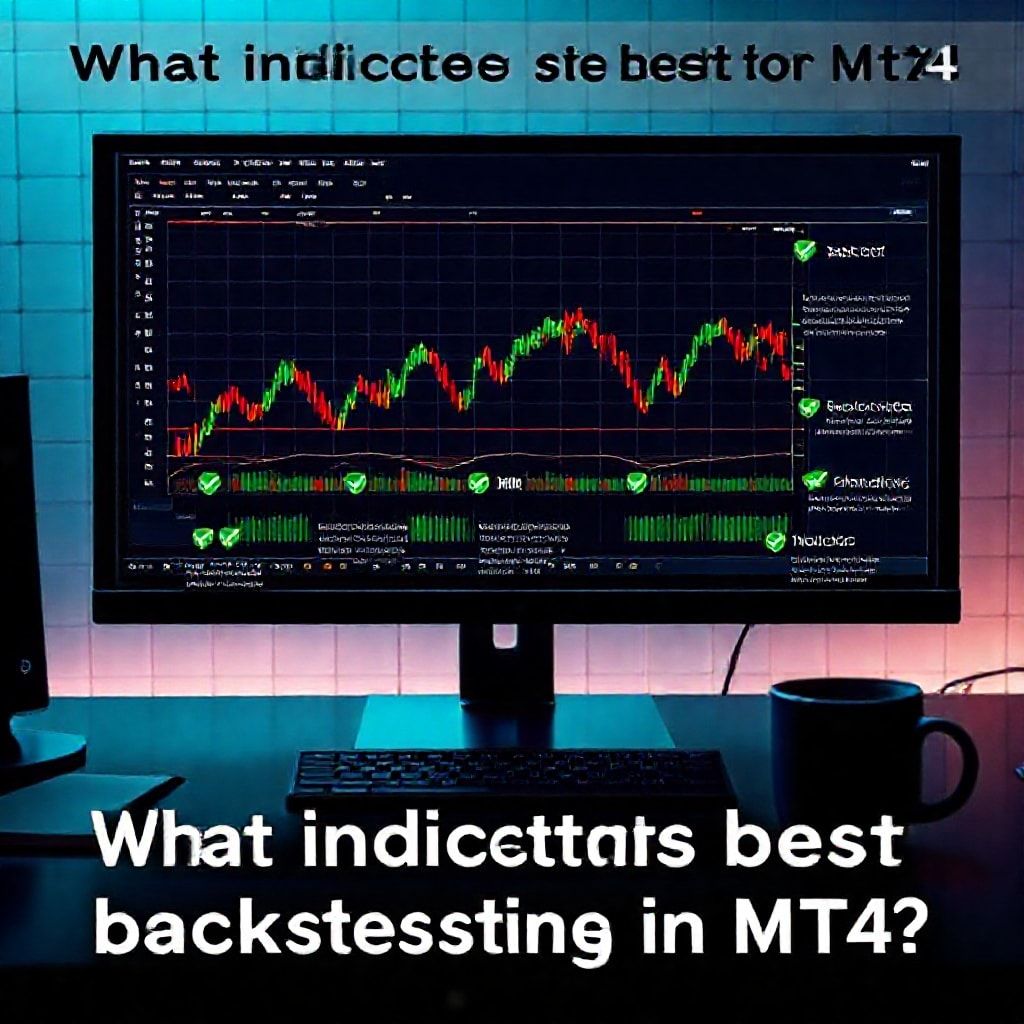What indicators are best for backtesting in MT4?
What Indicators Are Best for Backtesting in MT4?
Introduction
Backtesting in MT4 feels like testing your map before you rumbo through the real market. You want signals that survive changing regimes, different assets, and fee/slippage realities. The sweet spot isn’t one holy grail; it’s a balanced toolkit—trend, momentum, volatility, and a dash of volume—tuned to the asset class and time frame you actually trade. Add in clean data, walk-forward checks, and a bias toward robustness, and you’ll turn MT4’s backtesting into a trustworthy guide rather than a mirage.

A Practical Starter Toolkit
- Trend indicators: Moving Averages (SMA/EMA) and their crossovers help you ride real moves. A simple EMA 20/50 combo can filter noise on intraday FX, while longer-term trends adapt to stocks or indices.
- Momentum: RSI and MACD show pullbacks and trend strength. RSI helps spot overbought/oversold edges, MACD captures momentum shifts when price action stalls.
- Volatility: Bollinger Bands and ATR reveal retracements versus expansion phases. Bands give mean-reversion cues; ATR adjusts stop levels to current volatility.
- Volume and breadth: On-Balance Volume (OBV) and related volume-based signals add a useful layer when price action staggers. In some MT4 setups, you’ll pair OBV with price signals to avoid false breakouts.
- Consolidation and price action: Ichimoku or channel-based rules can help in ranging markets, offering context for breakouts versus reversions.
Backtesting reliability and pitfalls
- Data quality beats fancy signals. Clean, gap-free historical data across the instrument and time frame matters more than a shiny indicator. Beware discrepancies between tick data and OHLC samples.
- Realism over idealism. Include spreads, commissions, slippage, and daily liquidity limits. MT4’s demo vibe can overstate performance if you don’t simulate execution costs.
- Guard against overfitting. If a rule looks perfect on past data but fails in new regimes, you’ve built a mirror rather than a map. Use walk-forward testing and out-of-sample periods to check stability.
- Use multiple timeframes and assets. A signal that works on EURUSD H1 but blows up on AUDJPY H4 is a red flag. Robustness across instruments and horizons matters.
Practical cross-asset setup: leverage and risk
- Across forex, stocks, crypto, indices, commodities, and even options, the same indicator family can help, but tuning matters. Trend-following rules respond well to rule-based EMA crossovers; mean-reversion rules benefit from Bollinger bands with a defined re-entry gap.
- Leverage and position sizing. Start with conservative risk per trade (e.g., 1–2% of the account) and scale with volatility. Crypto and some options setups demand lighter leverage or bigger margins for the same signal.
- Risk controls. Define drawdown envelopes, stop-placement logic, and loss-expectation checks. Backtests should show performance under stress, not just average days in the green.
Web3 trends: DeFi, data density, and DeFi challenges
- DeFi and cross-chain activity push demand for indicators that surface on-chain liquidity, token velocity, and funding metrics alongside traditional price data. MT4 backtests can still guide, but you’ll want to augment with reliable off-chain data and consider oracle delays and liquidity fragmentation.
- Front-running and slippage risk in crypto demand conservative assumptions. The more liquid the market, the more your backtest will resemble reality; illiquid tokens can flatter signals in backtests but underperform live.
- Decentralization brings security and transparency hopes, yet also complexity. Smart contracts and AI-driven bots may operate on parallel rails, so cross-check signals between traditional MT4 indicators and newer data streams.
Future trends: smart contracts, AI-driven trading, and a new playbook
- Smart contract-enabled strategies could automate MT4-tested rules in DeFi contexts, blurring lines between classic platforms and on-chain execution. Expect greater emphasis on risk controls, on-chain transaction costs, and latency-aware design.
- AI and machine learning will push beyond fixed thresholds. Expect hybrid models that use MT4 indicators as features in broader predictive systems, with backtests that test model robustness across regimes.
- Reliability stays key. As automation grows, backtesting should incorporate scenario testing, regime shifts, and cross-asset correlation shocks. The best indicators for MT4 backtesting remain those that translate to real-world execution with disciplined risk management.
Promotional slogans and takeaways
- Backtest with confidence, trade with clarity.
- The MT4 toolkit that translates signal into disciplined action across markets.
- Indicators built for real-world execution, across forex, stocks, crypto, and more.
- Turn data into durable strategies with robust backtesting that stands up to DeFi’s next wave.
In short, what indicators are best for backtesting in MT4? A curated mix tailored to your asset class and horizon, tested with clean data, validated across regimes, and reinforced with solid risk controls. That approach keeps you ready for today’s multi-asset world and tomorrow’s AI-driven, smart-contract frontier.
YOU MAY ALSO LIKE




